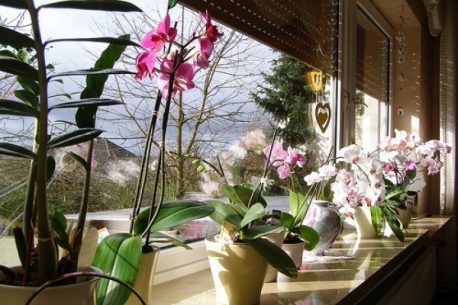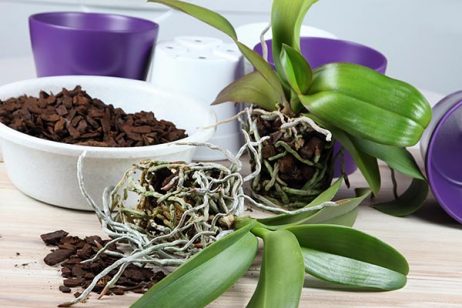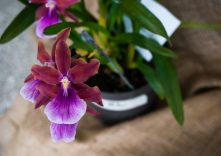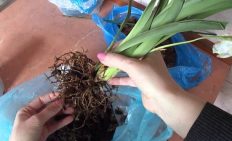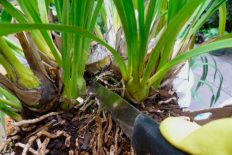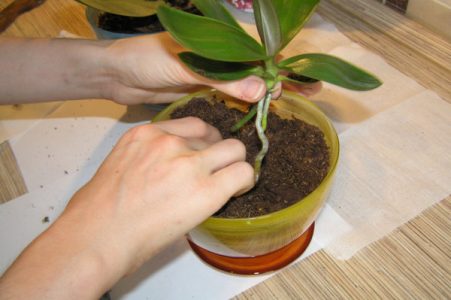The capricious beauty from the Miltonia orchid family, which fell on the windowsills of apartments from South America, has a very beautiful flowering. In order to regularly enjoy magnificent flowers, it is necessary to study in detail the nuances of growing a plant at home even before its acquisition.
Material Content:
Miltonia Orchid Variety Description
Miltonia has a sympodial type of structure, characterized by the presence of oval pseudobuds and aerial roots, through which the orchid eats. The length of the leaves, painted in grayish-yellow tones, is 35 - 40 cm. Before flowering, the ejection of arrows from the leaf sinuses is noted. Peduncles are crowned with flowers up to 12 cm in diameter with a velvety coating. Due to the similarity of some forms with pansies, they are popularly called "pansy orchids."
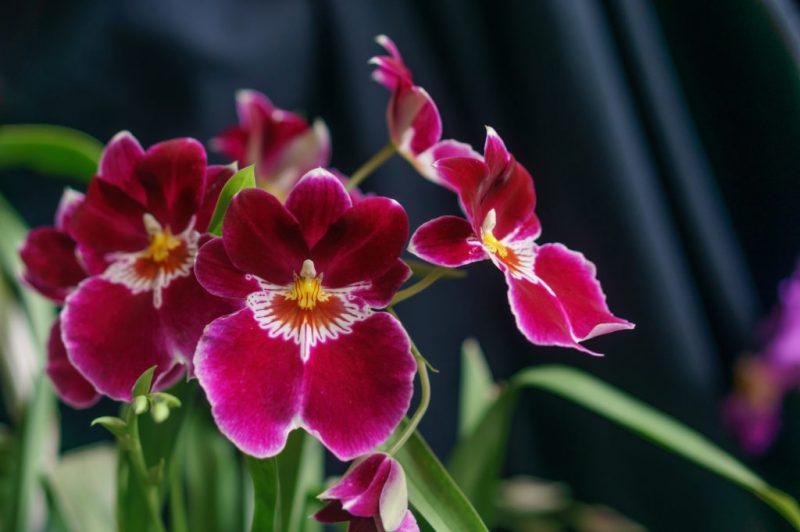
Among the most popular forms stand out:
- Miltonia is snow-white. The name of the species is due to the snow-white lips on the star-shaped flowers of brown color. Flowering, from which 3 to 5 flowers bloom, often occurs in the fall.
- Miltonia Klousa. The form with flowers similar to Cumbria is distinguished by the tiger color of inflorescences and a white lip with a purple base.
- Miltonia Varshevich. The species is represented by plants with red flowers, characterized by wavy edges, which are collected in panicles.
Optimal conditions for growing
To grow a beautiful flower from the rainforests on the windowsill of a city apartment, you need to create comfortable conditions for it:
- Lighting and location.The plant grows in the lower tier of the rainforests, and therefore in the apartment environment it needs an abundance of soft light, which the orchid can receive from the eastern and western windows. An important requirement when placing a flower is to keep the pot away from direct sunlight that can burn the leaves.
- Temperature. The temperature regime to provide a flower at home is quite problematic: during the period of active vegetation, the orchid feels comfortable in the daytime at 18 - 22 °Cand at night - at 12 - 16 °C. When the stagnation stage begins, the temperature should be between 14 - 18 ° C.
- Humidity. To make the plant feel in an apartment, like in a tropical forest, you should increase the air humidity by installing a stationary humidifier or a container of water.
Home Care
For successful cultivation of an exotic plant, you need to follow the tips for caring for orchids at home.
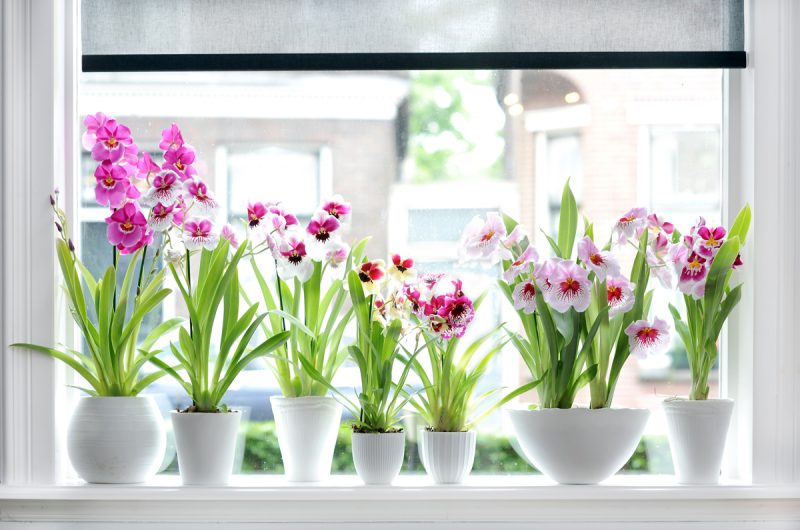
- Watering. Humidify Miltonia in the active phase of the growing season should be every 5 days. With the advent of winter, the frequency decreases to 1 time in 20 - 28 days, since at this time the greater danger lies in overfilling rather than in drying out the substrate. It is necessary to pay attention to the condition of the earthy coma: if the moisture does not dry out within 1.5 days, then the substrate is too dense or the air temperature is too low in the room. The best way to water is to immerse the pot in a container of warm water so that the pseudobulbs are not wet.
- Fertilizing and fertilizers. Orchid Miltonia needs regular feeding during the growing season. Every 2 - 3 weeks the plant is fed with liquid mineral fertilizers for epiphytes with alternating foliar and root method. The application rate is reduced by half, compared with that indicated on the package, so as not to burn the roots. Https: //www.youtube.com/watch? V = SEWNErA6CT4
Plant Transplant Rules
The transplantation of the Miltonia orchid, which does not like anxiety, is carried out no earlier than 3 years after the previous one.
The main signs signaling the need for the procedure:
- acidified, saline substrate;
- the appearance of roots in the drainage holes;
- slow growth and development.
Read also:gerbera indoor
The transplant procedure is carried out in early spring before the beginning of intensive vegetation, when:
- A plastic pot with a diameter slightly larger than the previous one is selected.
- A coarse-grained crust is placed at the bottom, which acts as a drainage layer, as well as several stones for the stability of the tank.
- Next, half the substrate is poured with a neutral reaction of foam, pine bark, wine cork, acadama and several pieces of birch charcoal.
- The old earthen lump is moistened so that it can be easily reached.
- Orchid roots are cleared of the remains of the old substrate. and then immersed in a solution of potassium permanganate.
- Treated roots are lowered into a new pot, which is filled to the top with a substrate while holding the plant in suspension.
- Over the next 5 days, a mist is created from the water around the transplanted specimen using a fine atomizer. Https: //www.youtube.com/watch? V = ubkBJdfk0Zw
Protection against diseases and pests
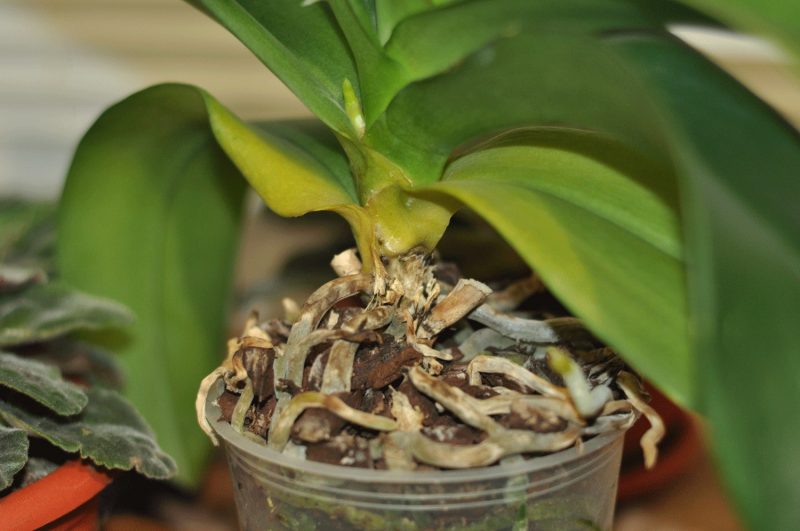
The orchid is relatively resistant to damage by diseases and pests, however, the following problems can sometimes be noted:
- Imbalance in salt balance. Drying leaf tips indicate the need to replace the substrate, the salinization of which occurs due to irrigation with tap water with a high content of lime.
- Rot. An excess of moisture leads to the development of rot, in which diseased roots are removed and processed, after which the flower is transplanted into a fresh substrate.
- Yellowing shoots. The causes of the problem in which the leaves turn yellow may lie in the incorrect placement of the pot, when the direct rays of the sun burn the shoots of the plant.Or moisture in the leaf sinuses, too dry air or an increased concentration of fertilizers during feeding.
- Thrips, scab, aphid, spider mite, mealybug Population of shoots by sucking pests that feed on leaf juice leads to the drying of greenery. To save the plant, it is necessary to carry out the treatment with an insecticidal preparation according to the manufacturer's instructions indicated on the package. Https: //www.youtube.com/watch? V = l85jiExIdqc
How to propagate the Miltonia orchid
Like other orchids with a sympodial type of structure, Miltonia is bred by dividing the bush. The procedure is carried out during transplantation according to the following scheme:
- The orchid is removed from the old substrate. and its roots are thoroughly cleaned of soil residues.
- Further, the bush is divided in such a way that each split has 3 pseudobulbs and developed roots.
- Slicing areas are treated with activated or charcoal, previously crushed.
- Delenki planted in a substrate for orchids.
Resuscitation Orchid Miltonia
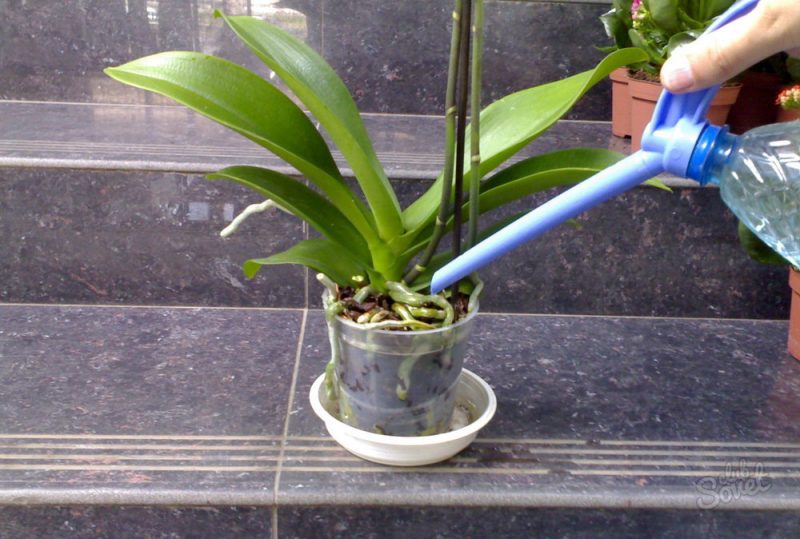
With improper care, the Miltonia orchid flower may remain without a root system. But do not rush to throw away exotic culture. It is better to try to reanimate the plant as follows:
- Every 2 to 3 hours, Miltonia is soaked in water at a temperature of 21 ° C.
- Once a week, a growth stimulator is added to the water for soaking, accelerating the process of root formation.
- After the roots appear, the duration of the soaking sessions is increased by 2 hours.
- When the root length reaches 5 cm, the orchid is planted in a suitable substrate.
The root formation process can last from 1 to 12 months.
The beautiful Miltonia orchid, which attracts gardeners with high decorativeness, is rather capricious and requires an attentive attitude. But for it she pays a magnificent and very long flowering.
It is interesting:orchid diseases


